For the money, the Xiaomi Watch S1 Active feels like a better proposition than the Xiaomi Watch S1 – you get largely the same experience for less money. You’ll have to live with the sportier look, but if you’re after a smartwatch that offers decent fitness tracking in a slim, exercise-friendly design, then theXiaomi Watch S1 Active fits the bill. For those searching out the best smartwatch at this price, however, there are better options out there.
Pros
- Light, workout-friendly design
- Solid fitness and sleep-tracking support
- Good battery life
Cons
- Dual-band multi-system GPS isn’t super-accurate
- Heart rate accuracy
- Payment support didn’t work
-
Display quality1.43-inch AMOLED screen -
DesignComes in 3 different case colours -
CompatibilityWorks with both iOS and Android
Introduction
The Xiaomi Watch S1 Active is the sportier version of the Xiaomi Watch S1 smartwatch. While both models are different visually, their feature sets are near-identical, albeit with the Watch S1 Active those features are wrapped in design that feels better suited to the rigours of exercise.
At £159, the Active also comes in £40 cheaper than the Watch S1, but still delivers big features such as the new dual-band multi-system GPS for more accurate outdoor tracking, NFC for contactless payments, and Amazon Alexa integration.
As such, of the two new Xiaomi watches, it feels like the S1 Active could be the one to reach for.
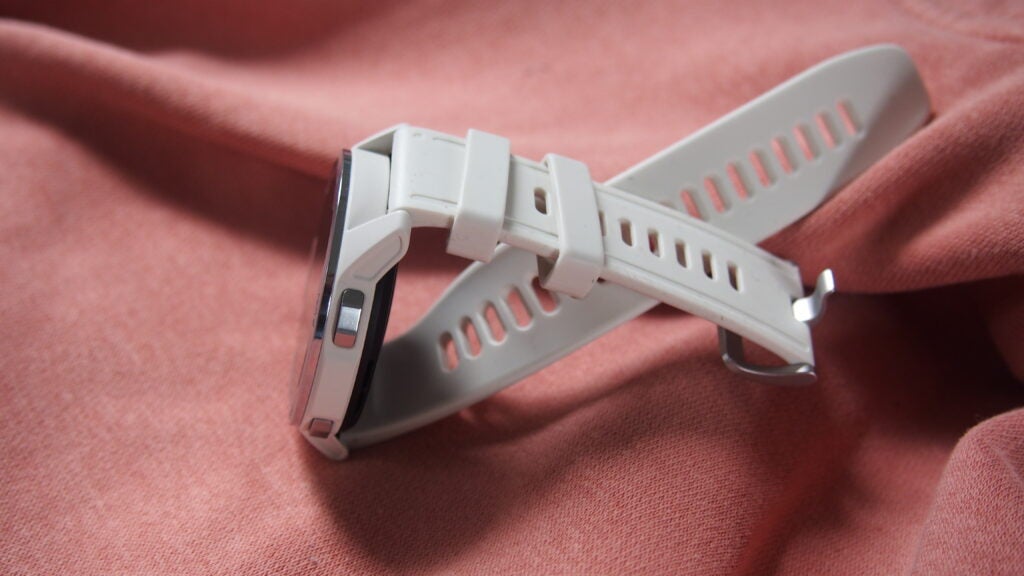
Design and Screen
- Three different case colours
- Lightweight design
- 1.43-inch AMOLED screen
- 5ATM water-resistance
The Watch S1 is the stylish model of Xiaomi’s two releases, with the Watch S1 Active being the fitness-focused option. And that becomes clear once you strap it on. The moment I put it on I found it feels like a much better fit for exercise than the S1 I’d just finished reviewing.
It doesn’t have the stainless steel or sapphire glass finish of the S1, but you do get a similar-sized 46mm watch case that’s available in a choice of Moon White, Space Black or Ocean Blue shades, with six different colours of fluororubber straps, too. The S1 Active is lighter than the S1, too, at just over 36g, making it much more comfortable to wear while you’re getting sweaty. There is some metal around the screen, which is eye-catching, delivering a more distinctive design over the Watch S1.
The physical buttons here are flatter compared to those on the Watch S1, but they operate in the same way to let you wake up the display, while the bottom one offers a shortcut to the workout tracking screen.
The screen here is identical to the S1: a 1.43-inch AMOLED screen with a 326ppi pixel density. It can be set to be always-on, although this will be to the detriment of battery life. The lack of sapphire glass does mean the S1 Watch Active lacks the added protection that this brings, but the screen is bright, offers good visibility indoors and in direct sunlight, and it doesn’t feel laggy in operation at all.
As far as delivering a design that feels more memorable and unique from the rest of the fitness-centric smartwatches out there, there’s a little more to the Watch S1 Active compared to the Watch S1. Crucially, it’s light and comfortable to wear, has a strong display, and is fit to work on land and in the water, if you fancy taking it for a dip, too.
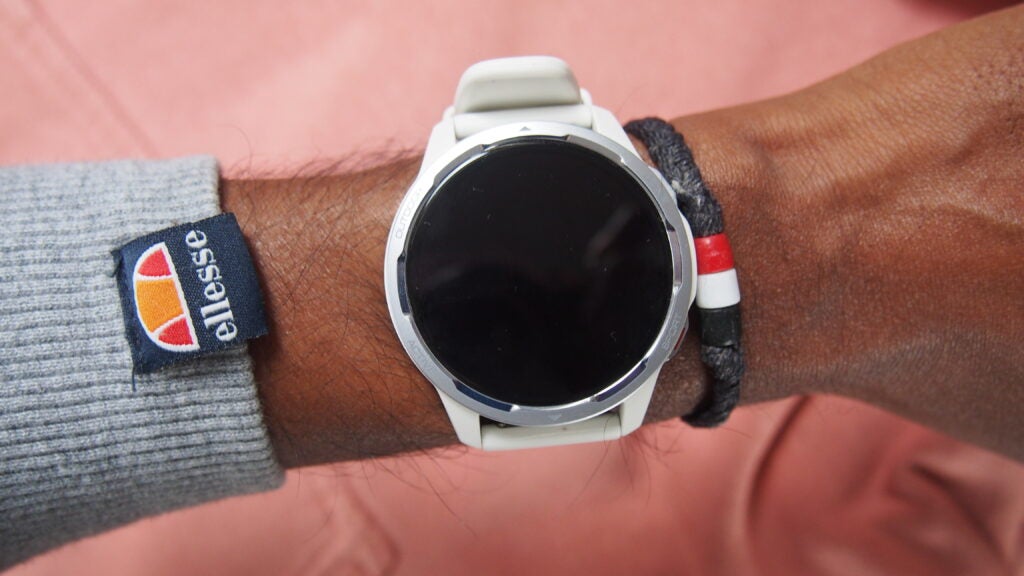
Features and Performance
- Works with Android and iOS
- Amazon Alexa integration
- Bluetooth calling
- Contactless payments via Mastercard
The Xiaomi Watch S1 Active offers all the same smartwatch features as the Watch S1, and what that means is that you’re getting a good enough experience that’s a step up from that offered by the Xiaomi Mi Watch.
For starters, it’s compatible with both Android phones and iPhones, and I didn’t encounter any major issues pairing it with my Android device and setting it up for testing. Note that you’ll need the Mi Fitness phone app for setup, which is a bit quirky in places and presentation. The UI pushes a lot of information to you in a way that’s not entirely logical, especially if you’re coming off a Fitbit or Apple Watch. Many of the more useful information is hard to spot at a glance at a glance early on as a result. Thankfully, after a few minutes tinkering with the watch’s settings, you can get it into a state where it does the job.
On the watch itself, you’ll be using swipes from the main watch face to navigate. Xiaomi lets you adjust the app menu screen, view screens with multiple widgets, and you can of course switch up watch faces. There’s a good mix of digital and analogue faces to choose from here, including animated ones, with more available via the companion phone app.
Notification support works well, even if you can’t respond to incoming notifications as you can on most smartwatches this price. They’re easier to read, and you can clearly see where they’re coming in from. There are some easy-to-use music controls but no music player, although that’s no big surprise given the price of the S1 Active.
The S1 Active’s headline features include smart assistant support for Amazon Alexa, the ability to take calls via Bluetooth, and contactless payments via Mastercard. Two out of the three worked fine during testing.
Alexa integration is similar to Amazfit and Fitbit’s offerings, letting you ask simple queries with responses displayed on-screen. Once you’ve set up Bluetooth calling in the companion app, you’ll receive calls to the device that are of acceptable call quality and loudness. However, the payment support feature simply didn’t work for me, crashing on the few attempts I tried to set it up.
Overall, then, Xiaomi doesn’t break new ground here. However, the company has at least attempted to offer a richer array of smartwatch features to match the slick and intuitive user interface over its previous watches.
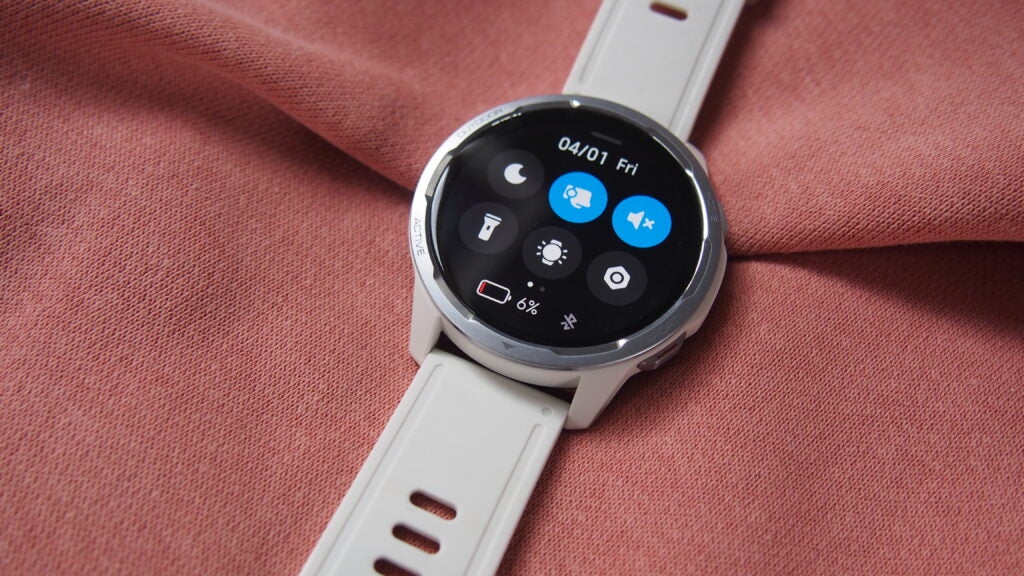
Fitness Tracking
- Generous number of fitness tracking modes
- Dual-band multi-system GPS
- SpO2 monitoring
In terms of health, fitness and sports tracking, everything the Xiaomi Watch S1 can do, the Watch S1 Active can do, too – but in a lighter and more exercise-friendly design. I’d say theWatch S1 Active is a better fitness tracker than a sports watch, but there are some decent elements on that front as well.
So, for sensors you have both accelerometer and gyroscope motion sensors for tracking indoor activities or swims, as well as covert monitoring of steps. There’s air pressure and magnetic sensors for additional outdoor data and a PPG heart rate sensor, which is also capable of measuring blood oxygen levels.
Head outdoors and theWatch S1 Active offers support for the five big satellite systems including GPS, GLONASS and Galileo. Xiaomi includes dual-band multi-system GPS, too, whereby the device grabs multiple signals from supported systems to deliver more accurate location tracking.
Much like the Watch S1, though, I found that promised improved outdoor accuracy didn’t quite live up to its billing when I put the S1 Active up against the multi-band GPS mode on the new Garmin Epix 2. It also meant core stats such as pace and splits weren’t quite right.
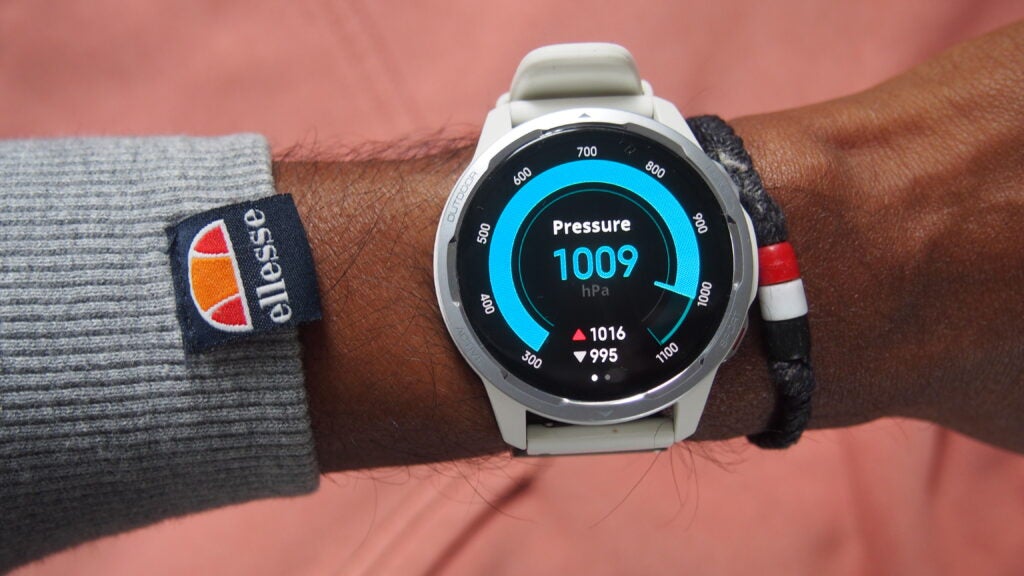
Outside of running, there are more than 100 other activities supported, plus there’s some automatic exercise tracking support here, too. I found the S1 Active performed well for pool swims and for indoor rowing sessions. Accuracy remained an issue for treadmill running – but, overall, it wasn’t all bad on the tracking front.
For those who like to monitor heart rate during exercise, I’d say the S1 Active does a good job – but like many optical sensors, it can struggle to keep up with sudden spikes in heart rate, which usually occurs during high-intensity training. The smartwatch’s heart rate sensor held up against a chest strap monitor for steady-paced workouts, but it did show signs of struggle as well.
In my opinion, the Watch S1 Active performs best when you switch over to fitness and health tracking mode.
A nicely designed widget displays your daily progress for steps, burned calories and time spent exercising. I found that step counting in general matched up well with Garmin and Oura Ring 3 tracking, never feeling wildly out on the accuracy front.
It’s a similar story for sleep tracking, which covers sleep stages, sleep duration and provides the option to track heart rate and blood oxygen while you sleep, too. For sleep duration and that sleep stage breakdown, the S1 Active offered similar data to the pretty reliable Oura Ring 3. Heart rate figures during sleep seemed high, but blood oxygen data was similar.
Tracking heart rate and blood oxygen while awake, I found that real-time heart rate and continuous heart rate stats were a bit too high for my liking. At times, it produced heart rate readings 10bpm above Garmin and Oura’s reliable continuous monitoring. The S1 Active was certainly better on the blood oxygen data front, although aside from plotting trends, Xiaomi doesn’t do a great deal with the information gathered.
Xiaomi does offer women’s health tracking, stress monitoring via heart rate variability and guided breathing exercises here, too. These are features we’ve seen crop on other smartwatches already, and for stress monitoring and breathing exercises in particular, there’s nothing new or innovative in the approach to delivering those features.
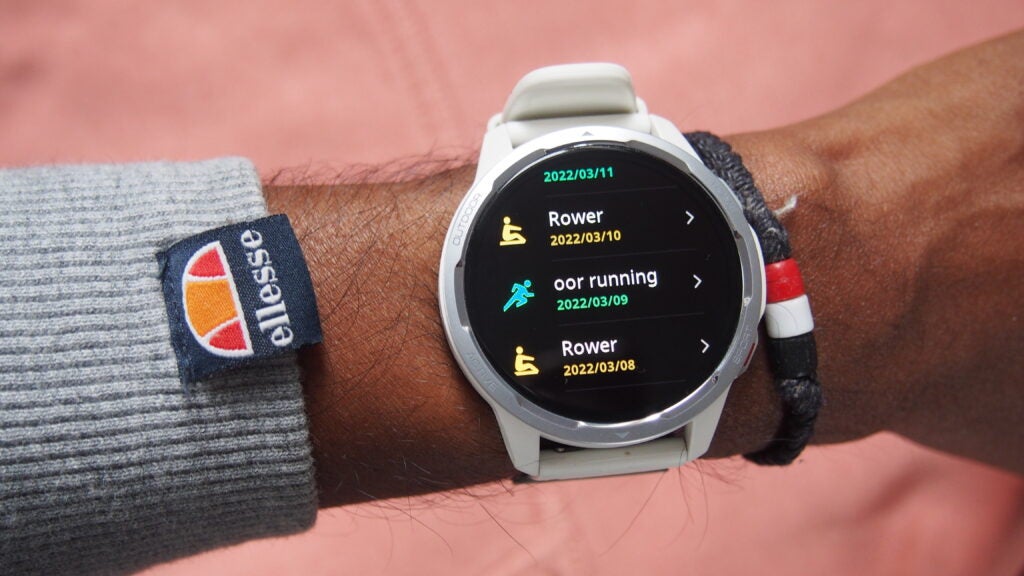
Battery Life
- A week of battery life
- 12 days in standard mode
- 24 days in Battery Saver mode
Like the Xiaomi Watch S1, the S1 Active offers the same capacity cell and therefore promises (and delivers) similar performance for battery life.
The S1 Active’s 470mAh capacity battery is designed to deliver 12 days in standard mode and 24 days in the Battery Saver mode; the latter restricts features you have at your disposal.
As mentioned, the Watch S1 Active doesn’t really offer anything really different over the Watch S1 to cause a greater or lesser drain on battery, so I found it lasted a week while using the advanced sleep monitoring features, with regular use of the GPS for outdoor tracking. Note that If you put the screen into always-on mode, then you’ll see this time drop.
Twelve days is standard mode is achievable, but you’ll have to sacrifice some continuous monitoring features to achieve it. In addition, Xiaomi uses a different style of charging disc cradle to power up the device, so unlike the S1 it doesn’t support wireless charging.
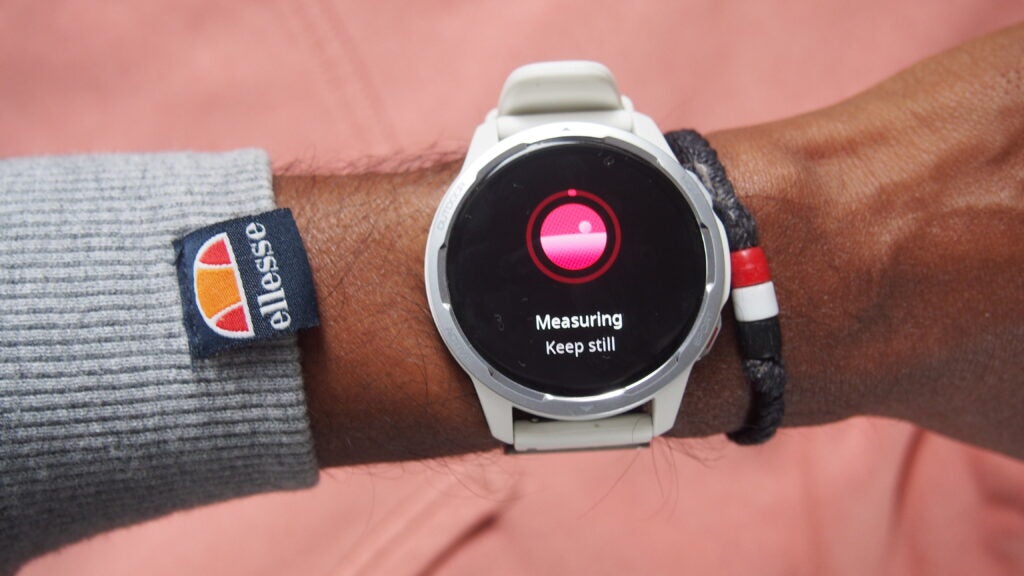
Should you buy it?
If you want a good fitness tracker in smartwatch form: While not all of the sports tracking features quite hit the mark, Xiaomi does offer solid fitness and sleep tracking support to help you stay active and keep tabs on that bedtime.
If you want the best smartwatch at this price: If you value those core smartwatch features, then there are better options to be had.
Final Thoughts
If I had to pick between the two new Xiaomi Watches, the Watch S1 Active is the model I’d opt for – simply because it offers the same features for less, in a design that while sporty, feels a tad more unique. Ultimately, though, I’m not sure it’s better than what rival smartwatches deliver at this price. In fact, there isn’t one area in which I think Xiaomi performs better – and that’s key here. Yes, the company’s smartwatches are getting better, but Xiaomi will need to offer something different to really stand out.
How we test
We thoroughly test every smartwatch we review. We use industry standard testing to compare features properly and we use the watch as our main device over the review period. We’ll always tell you what we find and we never, ever, accept money to review a product.
Worn as our main smartwatch during the testing period
Heart rate data compared against dedicated heart rate devices
Side-by-side GPS comparison with our best scoring smartwatches
FAQs
You can swim with the Xiaomi Watch S1 Active thanks to the 5ATM water-resistant rating, which makes it safe to be submerged in water with a depth of up to 50 metres. Xiaomi also includes a dedicated pool swimming tracking mode.
You can sync workouts to Strava through the Mi Fitness companion app. Head to the Profile section, then to Connected apps, to connect the two services to share your workout data.
Jargon buster
mAh
An abbreviation for milliampere-hour and a way to express the capacity of batteries, especially smaller ones in phones. In most cases the higher the mAh, the longer the battery will last but this isn’t always the case.
GPS
An abbreviation of the Global Positioning System, which uses satellite communication to pinpoint your location. Some smartwatches are able to achieve this communication without the use of a smartphone.
OLED and AMOLED
Types of displays that use self-lighting pixels to provide greater contrast and more vibrant colours than a typical LCD display, as well as sharper blacks.
















